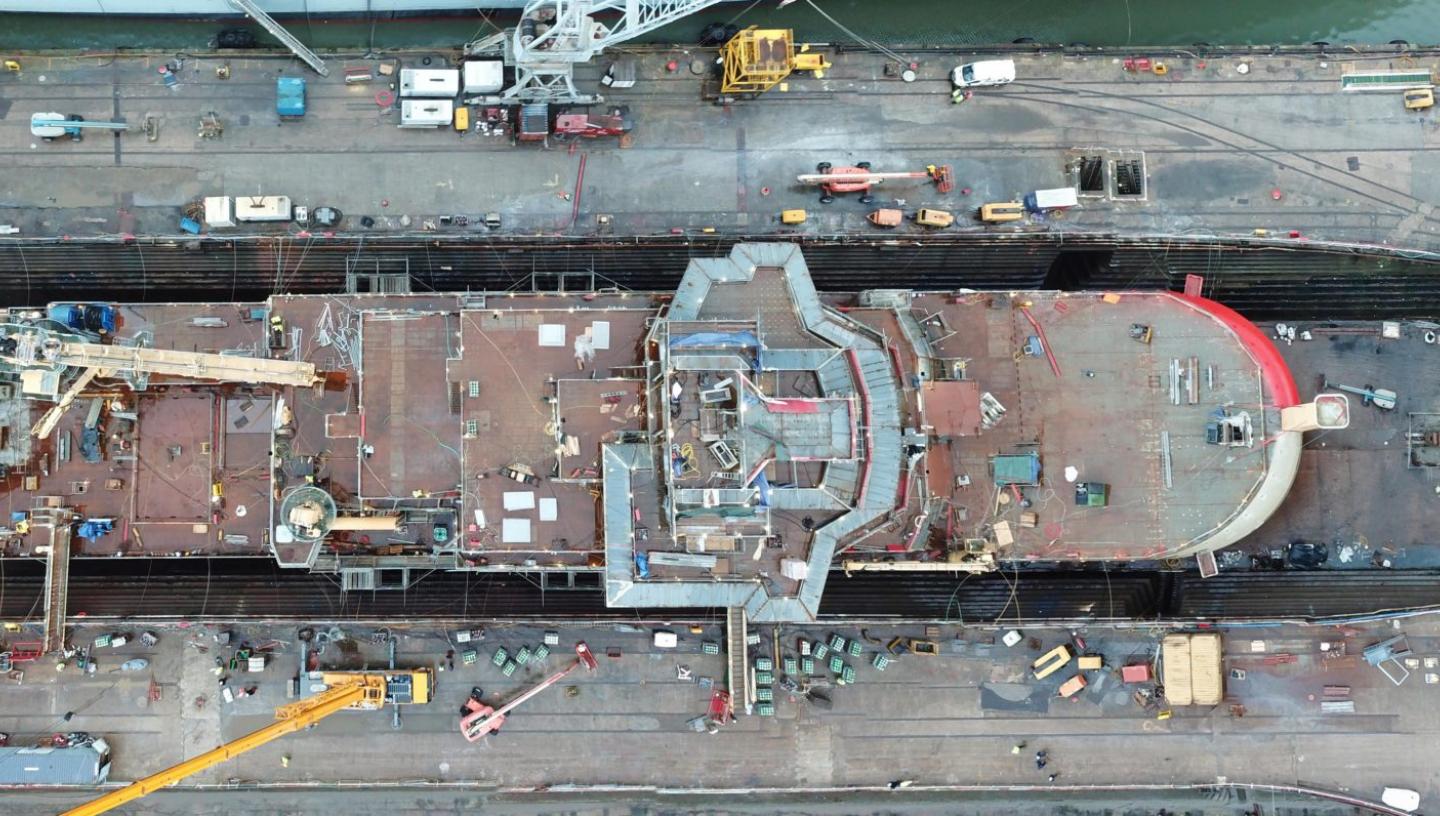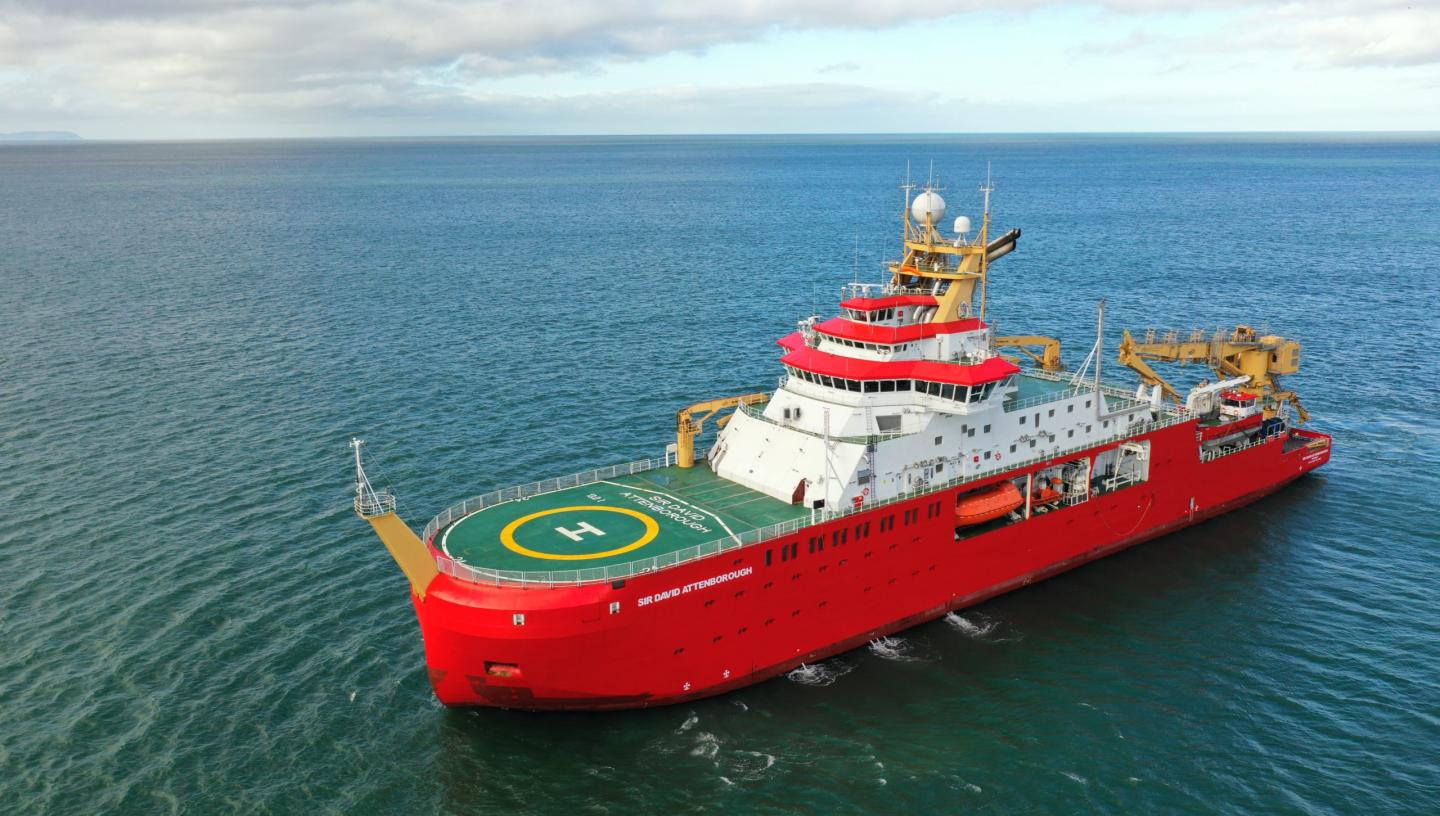
Royal Research Ship Sir David Attenborough is the UK's newest polar research vessel.
Costing £200 million and taking four years to build, the ship has been designed to break through ice up to a metre thick, conduct vital scientific research, and transport both people and supplies to the British Antarctic Survey's five Antarctic research stations.
"Nothing like this has ever been built before," says Captain Will Whatley, Master of RRS Sir David Attenborough.
Funding for the ship was first announced in 2014. It was constructed by shipbuilders Cammell Laird in Birkenhead, and has been handed over to operators the British Antarctic Survey.
Now the Sir David Attenborough is on the brink of beginning full polar operations.
Look back on the timeline of the project, and watch key moments from the ship's history and construction.
April 2014: funding announced
The UK government announces funding for a new £200 million polar research ship, designed 'to put UK scientists at the forefront of climate and ocean research in both Antarctica and the Arctic'.
19 November 2015: contracts signed
Shipbuilding firm Cammell Laird signs a deal with the Natural Environment Research Council to construct the new polar research ship.
Managing director Linton Roberts says the vessel, built at Birkenhead shipyard on Merseyside, will be "one of the most technologically advanced commercial ships ever constructed in the UK".
March-May 2016: the ‘Boaty McBoatface’ naming poll
The Natural Environment Research Council conducts an online poll asking the public to help name the new ship. By the end of the poll, the most popular name is ‘Boaty McBoatface’, drawing 33% of the vote and over 120,000 supporters.
Despite the vote, in May it is announced that the ship will be called the Royal Research Ship (RRS) Sir David Attenborough. The decision comes just before naturalist Sir David Attenborough’s 90th birthday, his name chosen ‘in recognition of his legacy in British broadcasting, [and for] inspiring a love of the natural world over generations.’
The suggestion Boaty McBoatface lives on however as the name for one of the remote-control submersibles on board.
17 October 2016: keel laid
The traditional keel laying ceremony marks the official start of construction.
During the ceremony a coin is traditionally placed beneath the first section of the keel. During this occasion, Sir David Attenborough placed a coin minted from the British Antarctic Territory.
Construction continues in the Cammell Laird construction hall ahead of a planned launch in 2018.
14 July 2018: hull launched
The 129-metre long, 10,000 tonne hull is launched into the River Mersey for the first time.
Captain Will Whatley later recalls, ‘The shipyard built two tracks, which are called ‘ways’, down the slipway for the ship to slide down. It was a very hot summer’s day, so the grease on the ways was extra slippery. The ship slid into the water at 10 and a half knots.’
19 July 2018: superstructure installed
The final six decks, bridge, helicopter hangar and accommodation are transported out of the construction hall and manoeuvred into place in one giant block. The section weighs 535 tonnes, is 40 metres long and 30 metres wide.
After the section is fitted, the ship is moved to dry dock for further construction work. Sir David Attenborough returns to the water in July 2019.
26 September 2019: naming ceremony
The ship is formally named RRS Sir David Attenborough in a ceremony led by the Duke and Duchess of Cambridge.
21 October 2020: sea trials begin
Sir David Attenborough leaves Cammell Laird shipyard for its first technical sea trials and equipment testing. It arrives in Holyhead Port on 17 November.
Naturalist Sir David Attenborough has recorded special crew announcements for the ship’s onboard PA system.
February-March 2021: further trials and COVID-19 delays
In February the ship leaves Holyhead for further sea trials in the Irish Sea.
In March 2021 however, the British Antarctic Survey announces that the COVID-19 pandemic has caused ‘significant delays to the Sir David Attenborough’s completion, certification, mariner training and sea trials programme’. The ship’s ice trials and planned Antarctic ‘science rehearsal cruise’ will therefore be rescheduled, although polar operations are still expected to commence in late 2021.
